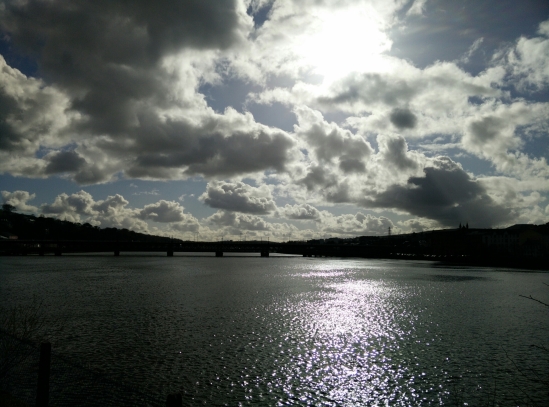Fair Head is a rocky headland about 3 miles East of Ballycastle and is the closest part of Northern Ireland to Rathlin Island. It is a popular rock climbing area and it is believed to have the largest climbable area of rock in the British Isles. If its your first visit (it was ours) it can be pretty hard to find. Its very easy to see Fair Head (either from Ballycastle town or Murlough Bay – posted earlier) but after following the road signs you’ll come to a small group of old cottages that look like a farmyard and it will seem like you can go no further. Theres a car park to your right as you drive past the cottages, which isnt even marked as a public car park until you actually drive into it, and there is no mention of this being the start of the Fair Head walk (again, until you drive into the unmarked car park using your guesswork). Someone really needs to sort the area out as it looks as if its just been left abandoned, and given its reasonable to assume tourists might want to come here, then could we maybe invest in some further signs? That would be helpful. Thanks Mr Antrim Coast & Glens man 🙂
So when you find the car park among the (seemingly empty) white cottages, drive in and park up and youll see this sign hilariously hidden behind a wall lol. The sign says there are “yellow circles” marking the route to Fair Head but good luck with that as we found only one which had been bleached white. Maybe they repaint them now and again but we just wandered about like lost sheep (across marshy bog land) and only found the edge of the cliff by trial and error.
The area up to Fair Head was pretty expansive. The car park from this point is further away than that lake you see in the distance.
Our first view from the edge. It was hard to keep the horizon straight for the pictures as we couldn’t see it, it was quite a hazy morning. The second bay in the distance is Murlough Bay where the big white house is I posted earlier. The sign says you can walk from here and it takes 90mins, but I really imagine its much more.
Its always hard to convey exactly how high up a place is in photographs, no picture can really do it justice. The highest point here is 196mtrs above the sea, and quite a bit of it is near vertical. If you have a fear of heights beware! In the distance (in the first picture) you can see Rathlin Island.
We saw this climber about to descend the huge wall of rock at Fair Head. This picture will give you some idea of the size of the rock face. In the second picture is a little dog who followed us up from just after the car park. She seemed to be alone as no one else was around, and the climber we came upon didn’t know who she belonged to either. When we were leaving she simply disappeared again. Maybe it was some doggy spirit of the Fair Head moors haha woof!
We made our way back to our car (across wet and squelchy fields) and on passing the lake took this photo of the island on it. The lake is called Lough na Cranagh and the island, known as a “crannog” was man made in the Iron Age by extending a small natural island and surrounding it with a stone wall. It was likely a place of refuge. The entire area of Fair Head is now owned by the National Trust in NI. Hopefully they can invest in some nice signs soon up there then. 🙂

















































